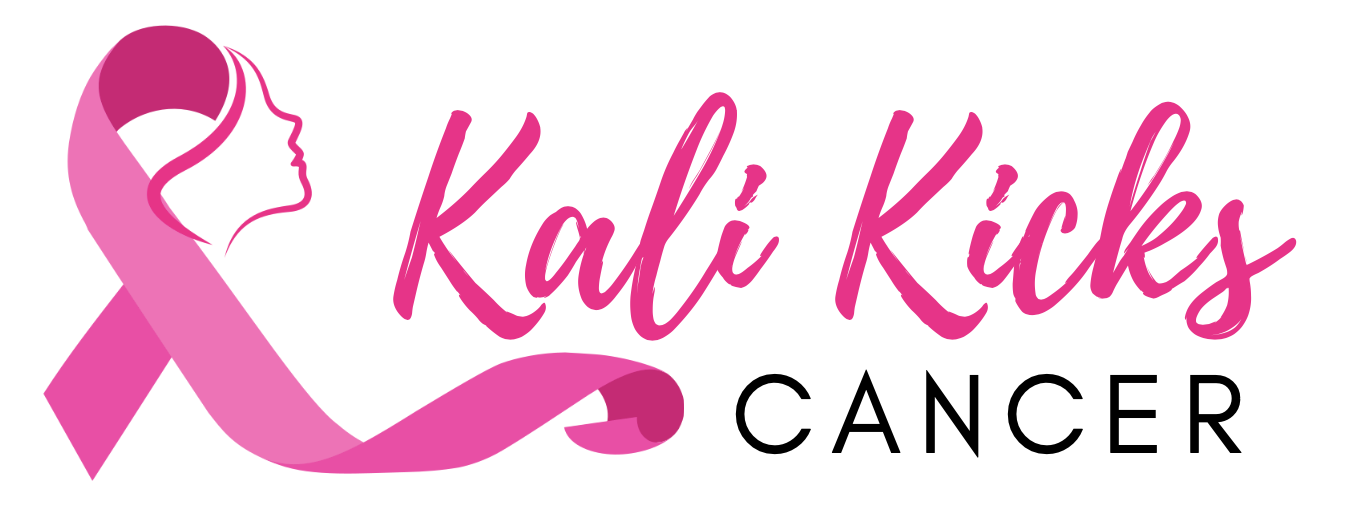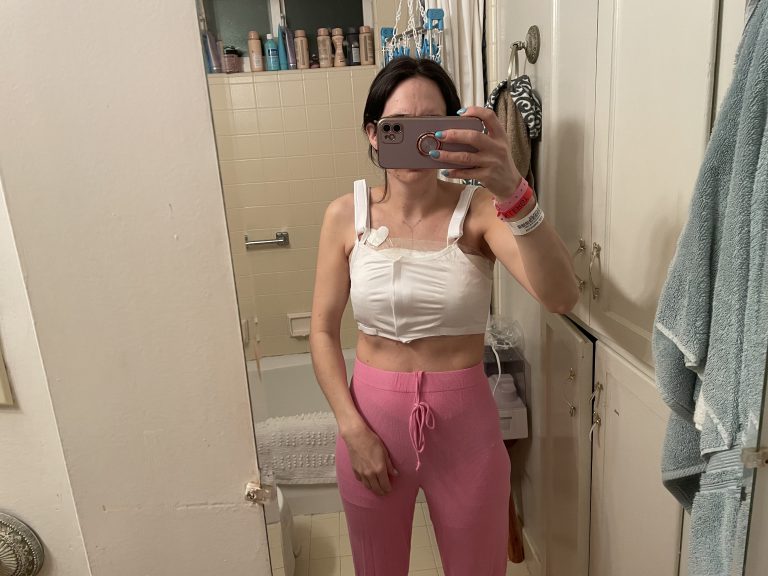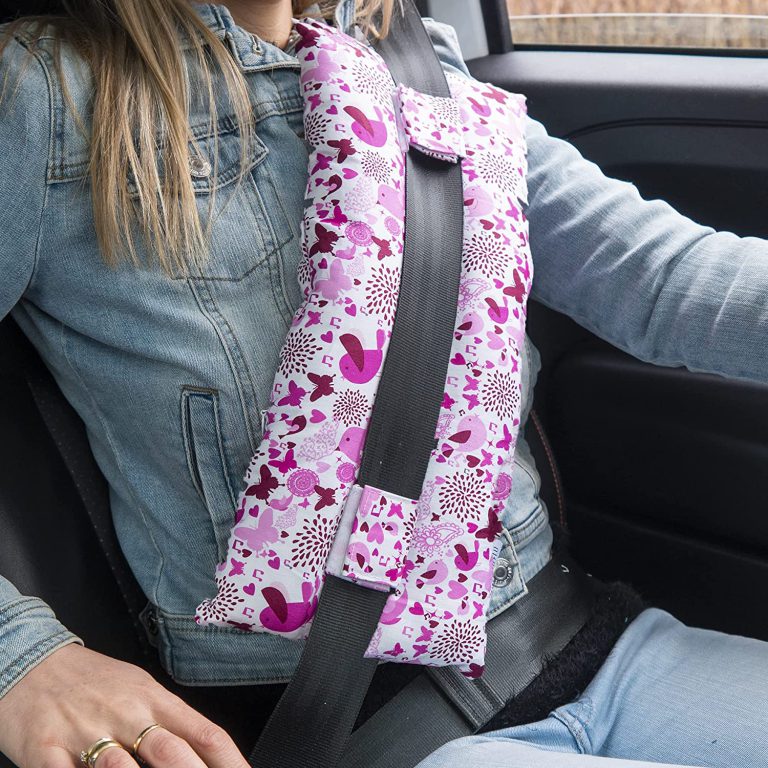In my previous post, I shared 10 essential items to use or take with you to chemo therapy infusions. All of the items I share are things that I have personally purchased or received as a gift. Here is a link to my list of Chemo Essentials.
Surgical Options
Following completion of my TCHP chemo regimen in December of 2021, I met with my surgical oncologist and breast oncology plastics teams. I had several pre-operation tests and scans, including another breast MRI, and mammogram. The results of the tests and imaging helped map out what type of surgery would be best for me.
I also met with the plastic surgery team to discuss the surgical plan. Surgery is a requirement in the treatment process to make certain that every trace of the cancer has been removed so I will have a full recovery and be 100% cancer free.

Factors to Consider
There were two key considerations for me when choosing what surgery options were best:
- The first factor was to maximize the removal of the cancerous tumor and affected tissue and to make certain the margins were clean.
- The second factor was more subjective, which was to choose which surgical option would give me peace of mind and help me feel more confident and comfortable going forward.
When I discussed this with my surgical oncologist, she continued to remind that both factors are equally important. As a woman who had already completed chemo and was forced into a medically induced menopause, my body had physically and mentally changed. I wanted to feel confident and comfortable with my own body. I am a single woman looking to get married and have children, and wanted to feel confident and comfortable getting back into the dating scene and finding a partner.
From the time I was told I had breast cancer, I was immediately comfortable with the notion of a double mastectomy to optimize removal of the cancer and decrease the chance of recurrence. That was how I initially processed it. An important fact to consider and hard to wrap your mind around is that even if you chose a mastectomy the changes of reoccurrence are statistically the same as they are for a lumpectomy.
I also learned that my surgery would be in 2 phases:
- A Mastectomy or Lumpectomy. Dr. Ewing already shared that her goal was to preserve as much breast tissue as possible, including trying to preserve my nipples. I also learned that my surgery was scheduled as a mastectomy to be sure there would be enough time to remove any further tissue or areas of concern. Dr. Ewing also shared that I could change my mind up until she wheeled me into surgery.
- Reconstruction surgery, which for me would happen 6 months after completing radiation. (Radiation can cause tightness of the breast tissue and decrease the amount of tissue the team has to work with, so it is crucial to allow the skin to heal after completion of radiation.)
What is a Lumpectomy?
A Lumpectomy is a surgical procedure to remove the cancerous tumor or abnormal tissue from within the breast. In this procedure the surgeon removes the tumor or abnormal tissue as well as a small amount of healthy tissue that surrounds it. They need to remove the surrounding healthy tissue to verify the margins are clear. Having clean margins is a term used when the pathologist finds no active cancer cells at the edge of the tissue, which validates that all the cancer was removed. To learn more about lumpectomy procedures here is a link from the Mayo Clinic.
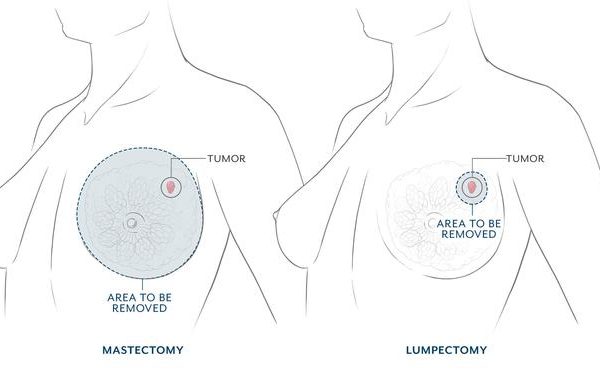
What is a Mastectomy?
A Mastectomy is a surgical procedure where the team of doctors remove either one or both breasts, either partially or fully. A bi-lateral (or double) mastectomy is complete removal of both breasts and all breast tissue.
When the breasts are removed, they place tissue expanders to increase the amount of tissue the plastics team will have for a breast implant. I like to call the expanders “Tupperware ta-tas.” However, I wait to make my final decision once we had the breast MRI results to make sure we were taking the appropriate measures to remove the cancer. Here is a link to an article about mastectomy surgeries from the Mayo Clinic
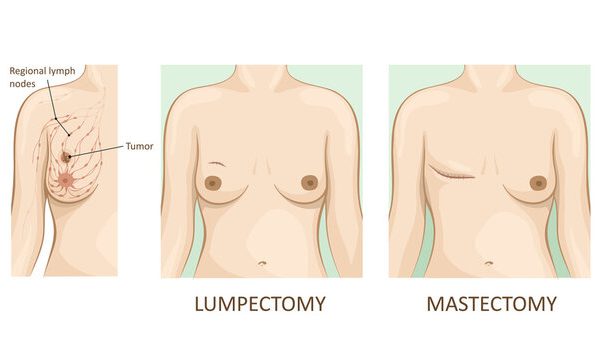
My Surgical Team
My surgical team consisted of a three physicians:
- My surgical oncologist, Dr Ewing,
- My breast plastic surgeon, Dr Piper, and
- An anesthesiologist.
Prior to surgery, your team of doctors will come out to speak with you in pre-op and review the surgical plan and procedures. This is a great time to ask any questions you may have and let them know the goal(s) you want from the operation.
One important issue is what size of breasts you want, as you may prefer a different size when the reconstruction surgery is completed. They will also mark your chest with a marker to show where the incisions will be.
The Surgical Procedure
The Surgical Oncologist Role
The role of the surgical oncologist is to surgically remove the cancerous tumor and tissue and verify the margins. About half-way through chemo completion, I had markers (small medal clips) placed in the breast tumor and in the lymph-nodes to identify the location. Dr. Ewing’s surgical plan was to remove the area where the tumor was as well as the lymph nodes that need to be removed or any other areas showing cancer cells, growth or impact.
The Plastic Surgeon’s Role
The role of the plastics team is to surgically place the expanders and then surgically close the area.
Each team would be in the operating room and rotate out for the next team. In my case the surgical oncologist made the initial cuts and removal of the breast tissue and tumors. Once she was confident that the removal was completed, the plastics team came into to finish. Dr. Piper and her team placed the expanders, closed the area and prepped for whatever reconstruction may be needed.
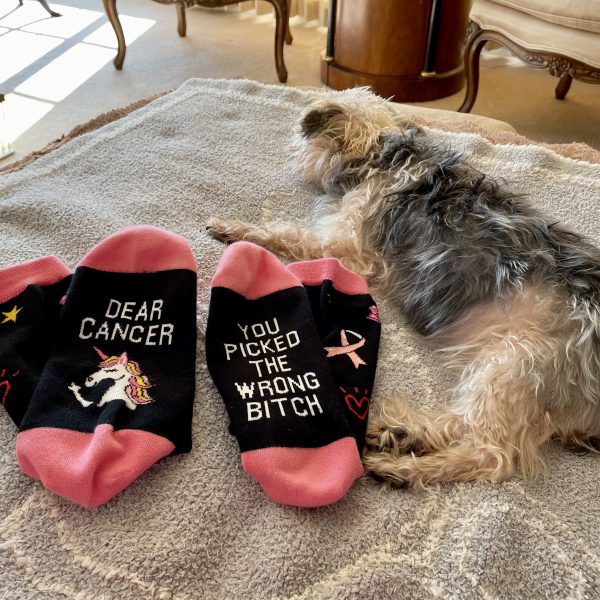
Conclusion
In my next post I will share my surgical outcome and experience after my bi-lateral (double) mastectomy. Thank you all for following along on my breast cancer journey. Sending Happy Holiday wishes and big HUGS! Treasure the moments and memories and hug your loved ones a little tighter.
